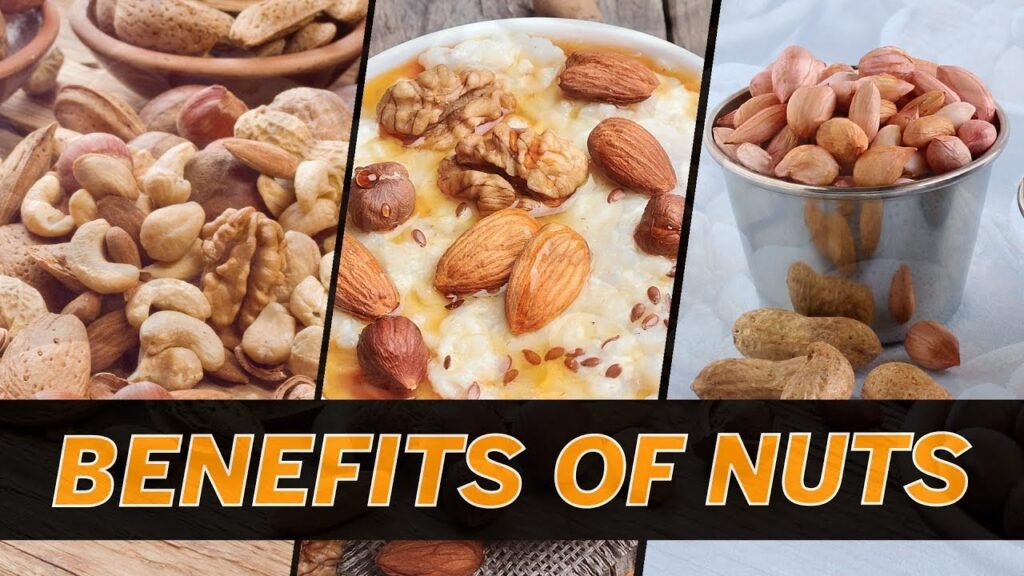This article will describe nuts for a healthy’ main characteristics, their uses, their nutritional contribution, and the benefits they bring to our bodies when we consume them regularly.
Properties of nuts
It is called “dry fruit” to that type of fruit whose water content is less than 50% of its capacity. In botany, dried fruit is considered to be those fruits whose outer wall hardens during the ripening process, leaving the seed housed inside and without any physical attachment to the wall that contains it.
There is a great variety of nuts in nature, and it is essential to incorporate them into our usual diet due to the number of nutrients they provide us, as we will see below.Nuts can have different characteristics. For example, we find some meatier, others employee monitoring tools more challenging, or more or less vegetable fat content. The common feature of all nuts is the shell that covers them in their natural state. This shell, likewise, can be more or less rigid and resistant.
Nuts are foods known to man for millennia and since before the birth of Christ. Already in pre-Columbian America, we find records about the qualities of peanuts. Historical evidence shows that the ancient Romans habitually consumed walnuts, pistachios, and several other types of nuts.
Uses of these foods
Traditionally, nuts have been used above all for gastronomic purposes; however, these foods’ medicinal benefits have also been enhanced in some cultures.
There is a wide variety of gastronomic uses for nuts in a large number of countries. For example, in the western Mediterranean region, nuts are usually served at noon as an aperitif or at the end of dinner to aid digestion.
It is common throughout the world to make healthy salads with all kinds of accompanying nuts, among which we can find pipes, peanuts, pistachios, almonds, walnuts, or pine nuts.
Among the medicinal uses of nuts for a healthy, we can find the production of oils made with certain nuts to massage and benefit both the muscles and the skin.
Some of these natural oils are almond oil, pistachio oil, walnut oil, or peanut oil, which can also be used for gastronomic purposes.
Nutritional contribution to the body
Nuts are one of the most nutritious types of food that we can find. Its excellent nutritional contribution makes this group of foods a perfect option to include in our daily diet and obtain all the necessary nutrients for the body.
Most nuts for a healthy are rich in nutrients such as proteins, minerals, carbohydrates, polyunsaturated and monounsaturated fats. In addition to that, each dried fruit has its characteristics and its determined contribution to nutrients.
For example, walnuts – especially those from Brazil – are rich in selenium and zinc; pistachios provide more natural fats; almonds offer protein and carbohydrates, and hazelnuts contain many vitamins and minerals.
It is usual to recommend eating nuts without salt or additives, and raw rather than roasted or cooked in any way since the former keep all their nutritional properties intact. At the same time, if we process them, they lose nutrients quickly.
Benefits nuts for a health
It is scientifically proven that regularly consuming nuts have significant health benefits. In general, nuts reduce the risk of cardiovascular and respiratory diseases, arthritis, anemia, intestinal problems, diabetes, and certain types of cancer.
The calcium content of nuts for a healthy promotes good bone and muscle health; the vegetable fats they contain help improve blood circulation, and the mineral content favors fertility. . Fildena 100mg ,Super P Force best natural treatment to improve erectile dysfunction
Types of nuts (and their properties)
Next, we will review the main properties of the most famous nuts worldwide and their culinary uses, and their most distinctive characteristics.
Walnuts
The walnut is the fruit of the common walnut ( Juglans regia ). Walnuts are one of the most popular types of dried fruit in the world. As a culinary ingredient, they are eaten mostly fresh – for example, in salads or as an aperitif – although it is also common to cook them, for example, to prepare sauces.
Almonds
Morphologically the almond is characterized by having a large and hard shell that cannot be eaten and a comparatively small seed. The tree from which almonds come is the almond tree, whose scientific name is Prunus dulcis.
In cooking, almonds are used as an aperitif and as a pastry ingredient, for example, in ice creams or cakes. One of the almonds’ properties is their allergenic potential – that is, their ability to cause allergic-type reactions in susceptible people.
Hazelnuts
Hazelnuts can be eaten raw or cooked, and oil with an intense flavor is extracted from them. They have been attributed to health benefits, such as the regulation of the circulatory system or the prevention of bodywear associated with aging.
Like almonds, these nuts are popular as a baking ingredient; thus, Nutella and Nocilla chocolate creams contain hazelnuts.
Pistachios
Pistachios are nuts characterized by their shell and their greenish seed, which is the pistachio’s edible part. They are used as an ingredient in sauces, fillings, ice cream, cakes, and other various recipes.
Cashew nuts
The cashew is known as “cashew” or “cashew nut” in Latin America, among other names. It is probably one of the most nutritious types of nuts and the most valued for its flavor.
Cashews are used as cooking ingredients and make cosmetics, paint, insecticide, medicines, and other products.
Sunflower seeds
Sunflower seeds are a prevalent type of dried fruit as a snack and even as a “leisure food.” In addition to being food, sunflower seeds have been used throughout history to prepare dyes and oils for hair and skin.
Peanuts
Although technically peanuts are legumes and not nuts for a healthy, morphologically, and from a nutritional and culinary perspective, we can consider them as such because they are very similar to foods of this type – for example, they are consumed as appetizers very regularly.
